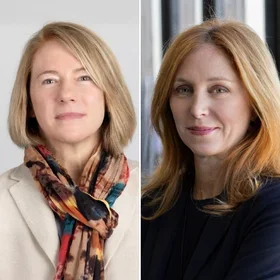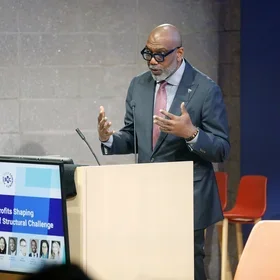By Bob Percopo, Lecturer in the Insurance Management Program; Energy Finance Consultant
The insurance industry faced the highest levels of catastrophic loss in recent history as a result of hurricanes Helene and Milton, drought, freezing and winter storms, and wildfires throughout the United States from which even the Northeast was not immune. Not including the recent wildfires in California, a NOAA National Center for Environmental Information summarized that $2.917 trillion in damages and costs have been sustained in 403 weather-related events between 1980 and 2024. These events are driving insurance companies out of high-risk markets, and where they are still providing coverage, premiums have become unaffordable for many.
The gap in available insurance has become a crisis with multiple stakeholders, where groups including insureds, insurers, regulators, and leaders continue to wrestle, but in the meantime, the solutions needed to protect against, prevent, and mitigate the effects of climate change likewise require a multidisciplinary approach. Insurers have been leveraging one discipline that has long been utilized in the construction and implementation of conventional, clean, and alternative energy solutions to help address climate change: the art of energy project finance.
Building the infrastructure against these negative effects will consume vast capacities of not only insurance but finance. In recognition of this, students in the core course of the SPS master’s in Insurance Management program titled Role of Finance in Insurance are challenged to focus on the here and now in dealing with life-altering dangers manifesting from climate change, and to ideate financially supported solutions. With cost estimates of up to $38 trillion by 2050 to reduce the rise in global temperature to 2 degrees Celsius, the ability to harness the financial capacity to attain this goal is critical. Current student Amanda Lindquist (’26SPS) reflects, “With an immense amount of contrasting information regarding climate change available, it can be difficult to see through the noise and get a better grasp of the full picture that we are facing. Everyone wants a quick fix to this problem or for there to be a fix that is agreed upon. Money is continually invested into solutions that may be solving false problems and could cause different risks that require mitigation.”
The course is designed so that before integrating principles of finance, students are led through a scientific approach to fully understanding climate change by starting with a thesis, investigating the thesis, and drawing a reasoned, logical conclusion. For example, there is research that points to CO2 as a significant culprit in climate change. Course contributor Sang Choi, a recently retired senior scientist at NASA, qualifies this finding and offers the following to students: “However, CO2 is also a life-sustaining compound without which humans cannot survive. Indeed, where there is increased agricultural production, there is also a high correlation to increases in CO2 in the earth’s atmosphere. Any analysis should take this into account as we hunt for solutions.” Student Warren Ting (’24SPS) said, “I had my own opinions about climate change, but this exercise enabled me to achieve a balanced understanding that helped me create a viable insurance-integrated solution with respect to, e.g., carbon sequestration.” During his research, Ting identified another contributor to climate change that is rarely mentioned: tectonic plate movement and its release of CO2.
As students develop proficiency in the financial aspects of the industry, they can apply their knowledge to the specific challenges of climate change and think critically about how to address the risks that lenders do not accept in the normal course of a business transaction as they utilize tools like market research, risk profiling, and risk transfer alternatives. The end result is an insurance solution that facilitates the financing of a viable and sustainable project.
When it comes to finance, the private sector should take the lead in developing programs to provide sufficient insurance capacity and funding for these efforts. Since the beneficiary of these benefits is the people, the various world governments should provide the support to back up these efforts. Students learn that support could be in the form of grants and guaranties to support reinsurance or finance efforts. Dutch program alumnus Dinesh Ho-A-Hing (’24SPS) embraced the multiple-resource approach in his final project, since the Dutch government could tax its people only enough to fund 50 percent of the cost of mitigation of the negative manifestations of climate change. Ho-A-Hing sought to fund the other 50 percent with a green bond structure. He said, “This is an issue that cannot be solved by any one entity. It requires the cooperation of local government, etc.”
By the conclusion of the program and this course, students should be able to participate, meaningfully, in conversations about finance, climate change, and risk management. And, more important, how to insure complicated large risks and provide the necessary funding to facilitate these efforts.
Views and opinions expressed here are those of the authors, and do not necessarily reflect the official position of Columbia School of Professional Studies or Columbia University.
About the Program:
The Master of Professional Studies in Insurance Management is for career professionals who want to accelerate their advancement to leadership positions or broaden their expertise in the industry. It accommodates both professionals already working in insurance and those looking to make a career change. The program is part-time, online, and instruction is asynchronous to accommodate working professionals.
Applications are reviewed and candidates are accepted on a rolling basis for the M.P.S. in Insurance Management program. Learn more about the program here.



